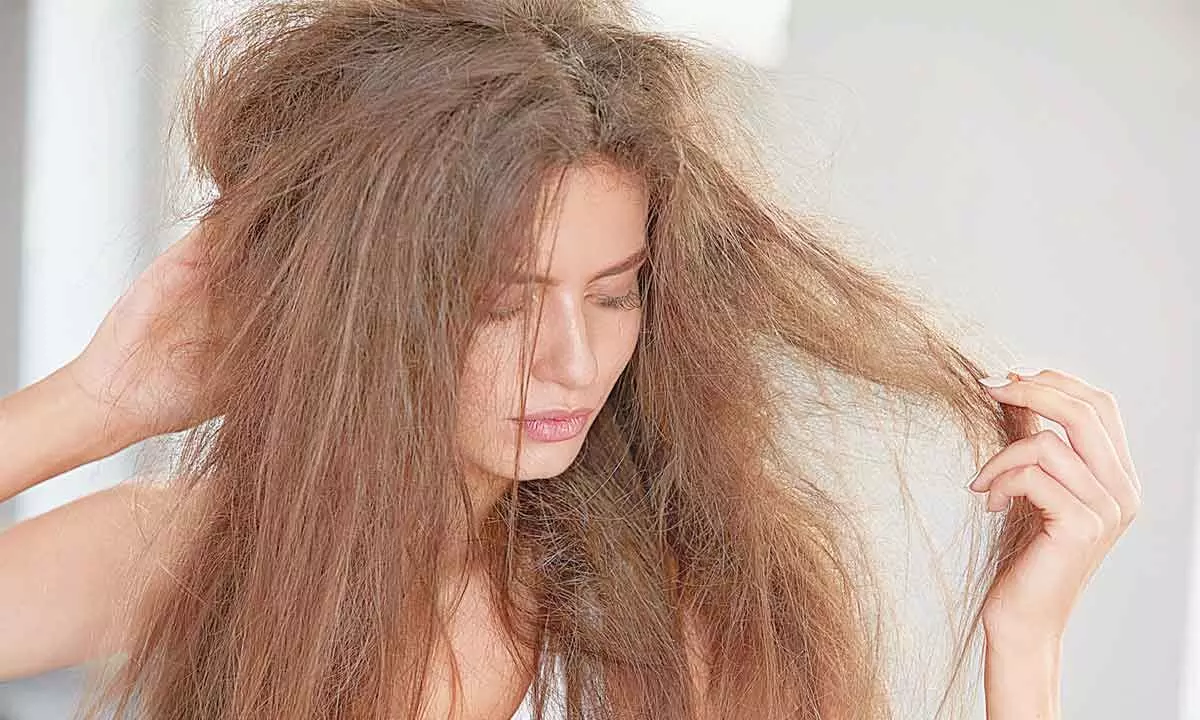Can humidity affect hair growth?

The monsoon is at its peak, and so is frizzy hair.
The monsoon is at its peak, and so is frizzy hair. Hair becomes dry, frizzy, and unmanageable as humidity levels rise. One has difficulty taming frizz and styling their hair.
Jamien Lim, Senior Hair Research Scientist at Dyson suggests some tips on how to manage your hair and avoid flyaways.
Does humidity flatten hair? This will be determined by your hair type. Humidity has the opposite effect on thicker, curly hair types that are prone to frizz because moisture and heat in the air cause it to expand and puff up. If your hair is naturally fine and your styling goal is to add body and volume, humidity can undo all of your hard work and cause your hair to return to its natural, straight state.
Factors that contribute to frizz
Uneven density, visible and uneven gaps in the hair's body, and poor fiber-to-fiber alignment are the major factors that contribute to frizz. Frizz is typically caused by a change in weather conditions (e.g., increased humidity) or physical interactions with the hair that disrupt the style. Frizz can be determined both visually and tactilely. Hair with a lot of frizz has less aligned strands and thus feels less smooth and soft. Damage to the hair strands causes a hairstyle to fall out faster, increasing the rate at which hair frizzes.
Cuticle damage causes hair to feel rougher, exacerbating the negative tactile signals associated with frizz. Flyaway hairs are single fibres that are repelled from the hair's body by static interactions. They can exacerbate poor edge definition when present at the same time as frizz.
Styling in humidity
The air tends to be more humid during the hotter months of the year, which can make hair frizzier and reduce style retention because the high water levels in the air reset the bonds created during styling. To reduce frizz, use light hair oil to make hair more supple; to improve retention, use a higher hold hairspray to set your style.
Tips to maintain healthy hair:
Condition with every wash: Conditioners are some of the best products you can use on your hair. They coat the hair and lubricate it meaning a comb can more easily reduce static build-up and reduce flyaways. Conditioners do not repair hair, but they help to reduce the signs of damage in the future.
Wide tooth combs: Using a wide tooth comb works well to reduce friction and mechanical damage when your hair is wet and much weaker.
Brush down: A good brushing technique is to brush down starting from the ends of your hair to remove tangles. Starting from the root will only tighten the knots further.
Milder shampoos: Greasy hair and scalp are caused by the build-up of the sebum produced by each hair follicle. Washing your hair often is not necessarily bad; reducing unpleasant residues such as sebum, loose skin cells, sweat and environmental pollutants. If you wash your hair every day try using a milder shampoo; Cocamidopropyl betaine (look on the ingredients list) can help, making a shampoo less irritating and milder. There is currently no clear scientific evidence that using a pre-shampoo is actually needed. If you use a milder or moisturising shampoo your hair will remain in good condition without the extra step.
Hairspray, mousses and oils: Hairspray and mousses work like glue to help with style retention by holding the hairs together in your desired style. High-hold hairsprays change how your hair feels because the strands are held more tightly together, so your hair is less able to move around. Natural oils and silicones can be used on your hair to reduce water from getting in, keeping your style in place longer. Too much however can weigh down your hair and have the opposite effect.
Dry shampoo: Some dry shampoos can be used for styling as they give the same benefits of backcombing but without damage to the cuticle. It can help to create a beachy/voluminous look or mattify the hair. A texturizing spray, or some dry shampoos, can leave a powdered residue in your hair.
Mechanical damage: This is the most frequent form of hair damage. Examples of causes are brushing, towel drying and running fingers through the hair. If towel drying, wrap hair in a towel and let it dry naturally to avoid further mechanical damage.














